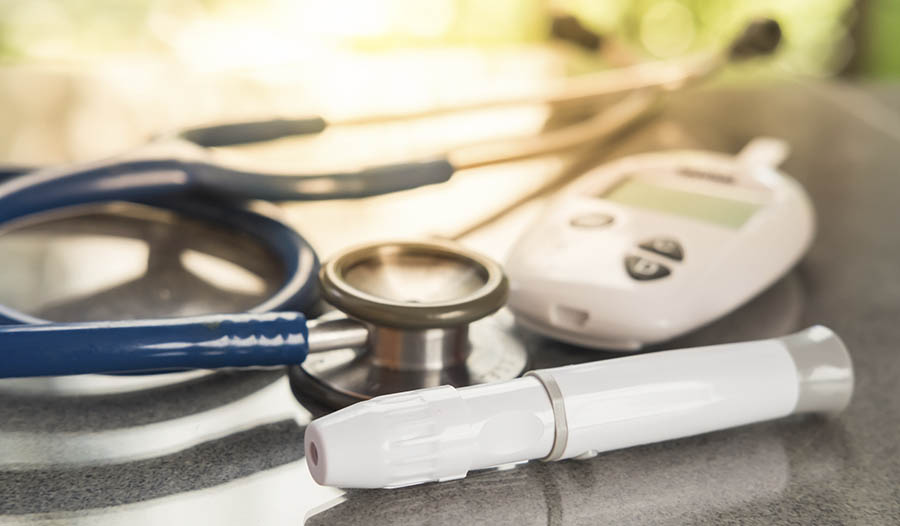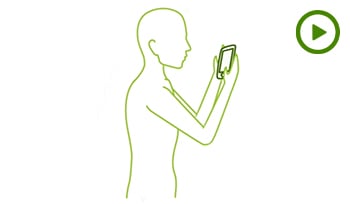15 Ways to Stay Healthy When Traveling with Diabetes
DISCLAIMER:This blog does not intend to provide diagnosis...
- In this article:
- 13 Things to Consider Prior to Travel
- Visit Your Doctor Before You Go
- Make Sure Vaccinations Are Current
- Pack a Diabetic Tool Kit
- Ask Your Doctor for a Letter
- Keep Your Medications in Your Carry-on Luggage
- Bring Extra Medications
- Bring a Medication List
- Pack Your Insulin Pumps and Continuous Glucose Monitors (CGMs)
- Familiarize Yourself with Emergency Service Options at your Destination
- Find Out Where the Local Pharmacies Are
- Consider Travel Insurance
- Bring Healthy Snacks
- Bring a Cooler When Traveling by Automobile
- Meal Prep for Air Travel
- Don’t Eat All You Can Eat on Cruise Ships
- Supplements That May Help Control Diabetes
- Chromium
- Berberine
- Summary:

Living with diabetes requires many lifestyle changes. In order to maintain healthy glucose levels, it is important that people with this condition exercise regularly and eat a balanced diet rich in vegetable and fruits among other lifestyle changes. Traveling, whether for work or pleasure, is a regular part of the lives of many people with diabetes, and it can be challenging—from ensuring proper nutrition while on the road or in an airport to keeping supplies and medications in order, travel is more demanding for people with diabetes and missteps can have serious (and even life-threatening) consequences. However, careful planning and attention to details can help you stay healthy and comfortable during your next trip.
Below are tips for traveling with diabetes. It’s very important to follow these guidelines and not leave your health to chance!
13 Things to Consider Prior to Travel
Visit Your Doctor Before You Go
Schedule an appointment with your doctor to make sure you are in optimal health prior to travel. Check that you are current with blood tests and annual eye exams. If you’ve experienced any changes in your health since your last visit, it is important that you let your doctor know. He or she may order blood tests to make sure your medication doses do not need to be adjusted before your departure. Remember, time zone changes and holidays can make it difficult to reach your doctor while you are away, so be sure to ask any questions and address any concerns during your doctor’s office visit. And remember, test results can take time—be sure to make your appointment a few weeks before you are scheduled to leave.
Make Sure Vaccinations Are Current
Depending on the location you’re heading to and time of the year you’re traveling, certain vaccinations may be recommended. Ask your physician to review your vaccination history and ensure they are current. People with diabetes 1 and 2 can have a higher risk for some infections and complications of infections, and the Centers for Disease Control (CDC) highly recommends certain vaccines, including flu and hepatitis B, for those with diabetes.
Pack a Diabetic Tool Kit
If used at home, make sure to pack your glucometer machine, glucometer strips and lancets. Studies show that most with type 2 diabetes really do not achieve better control when they check their glucose regularly. However, while traveling, your diet will most likely be different than your body is used to, and glucose may vary more than during normal dietary schedules. It may also be wise to take a spare glucometer, as you might be somewhere where replacements are hard to find. Bringing extra batteries should also be considered. Make a checklist to be sure you don’t forget any crucial or hard-to-replace supplies.
Ask Your Doctor for a Letter
Ask your doctor to write you a letter or give you a note on a prescription paper describing your diagnosis. This can be especially helpful if you use insulin, needles, and syringes as an official letter may help ease your way through security stops and help avoid unneeded scrutiny and stress. It could also be useful if you need to seek medical care while you’re away.
Keep Your Medications in Your Carry-on Luggage
We all know someone whose luggage was lost by the airlines. And because this travel mishap is so common, it is very important to you keep your medications on your person at all times while traveling. This is especially important if you are taking insulin or other injectables. Additionally, when baggage is checked in, the temperature of the cargo bay can reach sub-freezing temperatures, which could affect medications. Don’t risk having your medications, or anything else you need to stay healthy, lost or misplaced as it could take days for the airline to return them to you. Most airlines allow those with diabetes to bring medicines even if greater than the 3.4 fl ounces (100 ml).
Bring Extra Medications
If you are planning on traveling for an extended period of time, you should make sure you have enough medications to last you for at least twice the duration of your trip in the event of unforeseen delays. If you normally get 30 days’ worth of medications from the pharmacy, ask your doctor for a 90-day supply. Better safe than sick!
Common medications used to treat diabetes include metformin, glipizide, glimepiride, pioglitazone, sitagliptin, liraglutide and insulin, among others. If you are on any of these, it is crucial that you make sure you have enough for your trip. And take them along on day trips and other short excursions.
Bring a Medication List
Keep a written list of the medications you take in your wallet or a travel bag that you will have with you at all times. Write down the name, dosage (units or mg) and the frequency (i.e. once per day, twice per day, etc.). This can be helpful in case you lose your medications, or if you are out of the hotel and need to seek medical services.
Pack Your Insulin Pumps and Continuous Glucose Monitors (CGMs)
For those who use an insulin pump, additional precautions should be considered. If you are traveling across multiple time zones, and if your mealtimes are altered, you may need to check your blood sugar more frequently than usual and account for such fluctuations. In addition, the time- zone settings will need to be updated accordingly.
Some insulin pump manufacturers, such as Medtronic, allow customers to “borrow” an extra insulin pump for added assurance. Contact your specific manufacturer and see if they have a loaner program. Having an extra pump and supplies can provide peace of mind.
Most insulin pumps and continuous glucose monitors (CGMs) can safely be passed through the airport metal detector. However, it is usually advised to NOT to enter the whole-body scanner with the devices. Check with your specific manufacturer for their recommendations and let airport security know that you’re traveling with these devices.
Familiarize Yourself with Emergency Service Options at your Destination
No matter where you are headed, make sure you are aware of what medical services are available in the unlikely event you made need them. Ask your hotel attendees if there are local urgent care clinics or hospitals nearby in case you need one. If you are on a cruise ship, inquire about the medical services they provide on the ship prior to booking. Don’t wait until you feel unwell or are experiencing a medical emergency—make the necessary inquiries before you get settled.
Find Out Where the Local Pharmacies Are
Some medications, which may be prescription only in your country, may be available over-the-counter in the place you are traveling. Know where local pharmacies are located and make sure you have your medication list in case you misplace or lose your medications.
Consider Travel Insurance
Before you leave, call your personal health insurance and ask them if they provide coverage or reimbursement for health care services you may need while you are traveling. If not, consider purchasing separate travel insurance prior to your departure to avoid any unexpected costs for services. A search on the internet can provide companies who can assist with this coverage.
Bring Healthy Snacks
While traveling, changes in eating schedule and food options can make maintaining good blood sugar control challenging. Packing healthy snacks can be crucial. You will probably find yourself eating out more than often while traveling, so it’s very important to ask questions, especially if you are unfamiliar with certain ingredients. Low carbohydrate options are a good idea for those with diabetes.
Bring a Cooler When Traveling by Automobile
When traveling by automobile, many will rely on drive-thru fast food restaurants for their meals. Frequently, these foods include a lot of sodium, carbohydrates and processed ingredients, which can wreak havoc on blood sugar—especially when you’re sitting in a car for hours. One solution is to bring your own food when possible. A portable cooler is a great way to keep fruits and vegetable fresh. Also, you may need to keep your insulin cool, but not frozen, and a cooler can help.
In order to stabilize your sugar and make sure it does not get too high, it is important to have low-carbohydrate snacks readily available. Here are some good choices:
- Protein bars (be sure to read the label as many are high in sugar)
- Nuts and seeds: almonds, Brazil nuts, cashews, pecans, pistachios and pumpkin seeds
- Whey or vegetable protein powder shakes
Meal Prep for Air Travel
If traveling by airplane and spending time in the airport, finding a healthy meal can difficult. You want to make sure to meal prep—airports allow you to bring food from home, so bring along a packed lunch and be sure to keep healthy snacks in your bag. Remember that liquid restrictions are in effect, so protein shakes and smoothies probably won’t make it through security.
Don’t Eat All You Can Eat on Cruise Ships
Most cruise ships have all-you-can-eat buffets, which can be very tempting. It is important to plan your meals accordingly, as taking advantage of unlimited access to carbohydrate-rich foods and desserts can seriously elevate blood sugar. Load up on salads and produce when hitting the buffet. If the weather is hot and alcohol is consumed, dehydration can quickly set in and blood sugar can elevate to dangerous levels. Extra caution is needed to ensure one has a fun but healthy safe trip.
Supplements That May Help Control Diabetes
Chromium
Chromium is an essential mineral, which plays a role in glucose metabolism. The use of chromium for glucose control is based on the fact that the chromium element is required for the enzyme known as GTF or glucose tolerant factor. GTF binds to insulin and makes insulin more efficient, thereby helping to lower blood glucose. Over the years, there has been controversy as to whether or not chromium is helpful. However, a 2018 meta-analysis, which looked at 28 studies, concluded that chromium could help lower fasting-blood-sugar levels while also lowering hemoglobin A1C, a marker for overall diabetes control. Suggested dose: 200-500 mg twice per day
Berberine
Berberine is a golden-yellow chemical. It comes from the stems of the Oregon grape and Indian barberry. Its use goes back almost 3,000 years in traditional Chinese medicine (TCM). It can be used to help improve blood sugar, high cholesterol and high blood pressure. A 2015 meta-analysis study, which examined 22 other studies and a total of 2569 patients concluded that berberine could improve fasting glucose levels, blood glucose after a meal and one’s overall three-month average, as measured by the hemoglobin A1c blood test. A 2017 study proposed that berberine may exert some of its glucose-lowering abilities by favorably affecting healthy gut bacteria. Suggested dose: 500 mg orally three times per day.
Other herbal supplements frequently taken by those with diabetes include cinnamon, black cumin seed extract and olive leaf extract.
Summary:
Preparation is the key to success no matter where one is traveling. Taking adequate time to plan out your travel route, accommodations and medical resources can help you to continue to travel the world no matter what health conditions they may have. Bon voyage!
References:
- Accessed October 26th, 2018 https://www.medtronicdiabetes.com/customer-support/traveling-with-an-insulin-pump-or-device
- Med Hypotheses. 1980 Nov;6(11):1177-89.
- Mol Nutr Food Res. 2018 Jan;62(1). doi: 10.1002/mnfr.201700438. Epub 2017 Aug 15.
- J Ethnopharmacol. 2015 Feb 23;161:69-81. doi: 10.1016/j.jep.2014.09.049. Epub 2014 Dec 10.
- Zhongguo Zhong Yao Za Zhi. 2017 Jun;42(12):2254-2260. doi: 10.19540/j.cnki.cjcmm.20170307.014.
- Complement Ther Clin Pract. 2018 May;31:1-6. doi: 10.1016/j.ctcp.2018.01.002. Epub 2018 Jan 4.

 By Dr. Eric Madrid, M.D.
By Dr. Eric Madrid, M.D.


